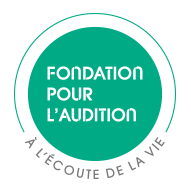PONSOT Emmanuel
Project status: closed
Emmanuel Ponsot is conducting his postdoctoral training in the Hearing Technology Lab at Ghent University in Belgium. His aim is to develop an innovative hearing test for diagnosing hidden hearing loss – known scientifically as synaptopathies. These pathologies, which impair speech perception in noise, are not detected by standard audiological tests.
The hearing impairment measured by an audiogram in standard hearing tests reflects the impairment or loss of certain sensory cells in the inner ear. The audiogram has its limitations and cannot detect another type of damage, synaptopathy, which is why it is also referred to as hidden hearing loss: “Synaptopathy involves the loss of nerve fibers that convey the auditory information received by the sensory cells to the brain,” explains Emmanuel Ponsot. “The signal sent to the brain is therefore lower quality. As a result, patients have difficulty following a conversation in a noisy environment, although their audiograms may be normal if the sensory cells are not affected.” Hidden hearing loss develops with age but also occurs in young people who have been overexposed to noise. At present it is impossible to determine the number of intact nerve fibers in a patient to make a precise diagnosis of this disorder. This is the challenge of the young researcher’s project.“For several years now, I’ve been interested in hearing problems that impact speech perception in noise. Joining Sarah Verhulst's laboratory at Ghent University (a state-of-the-art laboratory for auditory system modeling), thanks to the support of Fondation Pour l’Audition, provides an great opportunity for me to develop new diagnostic tools based on my previous work. Building on this new experience, I would then like to join a research organization in France, in particular to develop this innovative theme of synaptopathy in humans.”
The contribution of computer modeling
Emmanuel Ponsot wants to develop a test to quantify the proportion of impaired nerve fibers in an individual. His aim is to take measurements in representative groups of healthy and hearing-impaired individuals to evaluate on a large scale the contribution of hidden hearing loss to problems of speech perception in noise. The originality of his project lies first of all in the sounds used: “Unlike standard audiological tests, which are based on listening to sounds at a single frequency and in silence, the artificial sounds chosen cover a wide range of frequencies and present variations over time, exactly like the voices,” explains Emmanuel Ponsot. Another strength of the project is computer modeling. “The programs used in the laboratory simulate all the stages of sound processing very precisely, just like the ear. This model will enable me to understand exactly how the signal is impaired by synaptopathy. Understanding these impairment mechanisms will, I hope, lead me to develop a diagnostic test.” This will be a critical breakthrough in our aging society that is increasingly exposed to noise.
Doctor Emmanuel Ponsot
Postdoctoral Researcher
Hearing Technology Lab, Ghent University, Belgium
Related scientific publication(s):
- Emmanuel Ponsot, Léo Varnet, Nicolas Wallaert, Elza Daoud, Shihab A Shamma, Christian Lorenzi, Peter Neri. Mechanisms of Spectrotemporal Modulation Detection for Normal- and Hearing-Impaired Listeners. Trends Hear. Jan-Dec 2021;25:2331216520978029. doi: 10.1177/2331216520978029.
